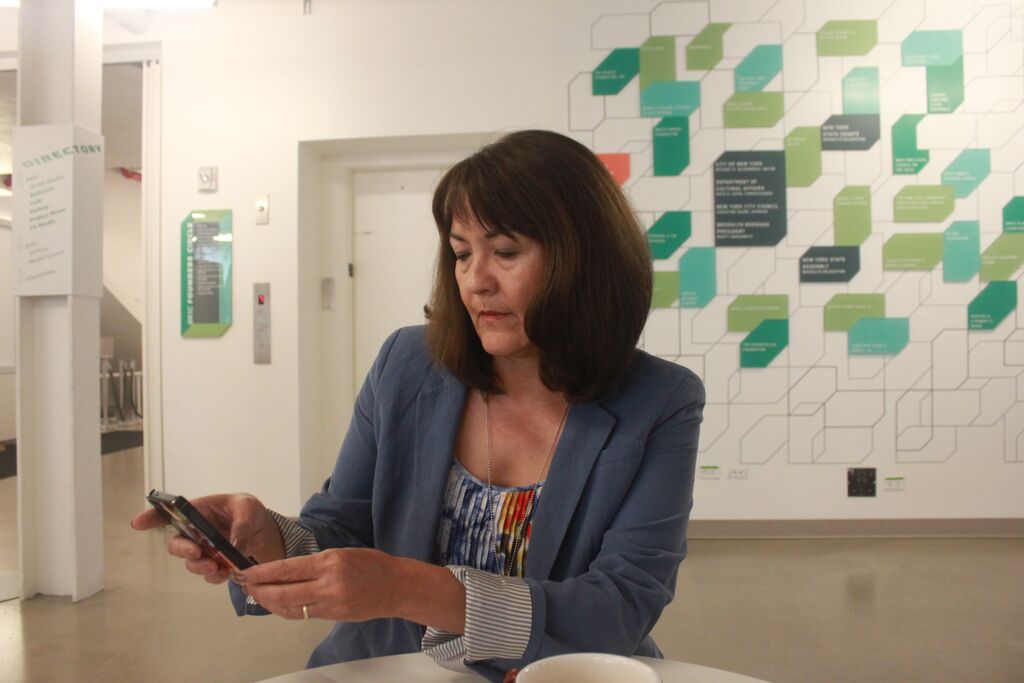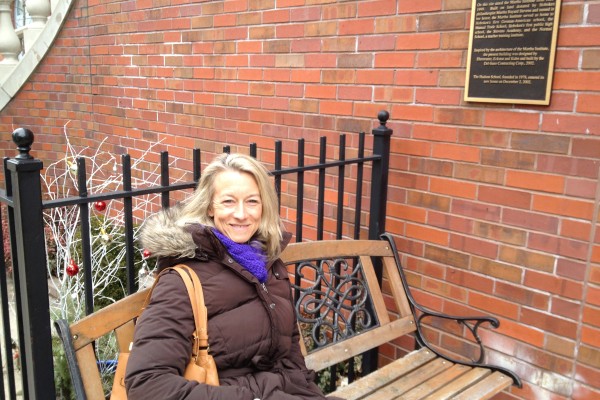The modern building in Fort Greene, Brooklyn that houses BRIC, a community media and arts space, stands about 14 miles from Rockaway. Its first floor includes a small café, and a mural representing the public and private donors who funded the institution. It’s an inclusive, smart space, and where Jill Cornell, a mother from Windsor Terrace who “suffers from terminal volunteerism,” wanted to meet.
“I’m fortunate, and so I believe it’s a responsibility when you have resources to give back to your community,” she said.
Cornell began summering at the Silver Gull Beach Club in Rockaway in 2000. She’s also a member of the Rockaway Theater Company, which stages productions in a hangar in Fort Tilden, and she used to work at a Manhattan law firm, a job she credits as preparing her to volunteer after Sandy.
“When you're a paralegal supervisor, and you work the morning shift, all you do is put out disasters from the night before,” she said.
About two days after the storm, Cornell began learning about the destruction in Rockaway from Facebook friends on the peninsula, and from her husband, who works for a large real estate company with employees who live there.
“He realized that the problem was huge,” Cornell said.
Over the next 10 months, Cornell mounted a huge response. She purchased and delivered relief supplies, knocked on doors in Far Rockaway to ask residents what they needed, and, working alone, sanitized a formerly sewage-filled bathroom in a home in Broad Channel with a gallon of Clorox, some rags, and, lacking anything larger, some toothbrushes, an effort that Ginia Bellafante mentioned in her New York Times article about mothers who volunteered in Rockaway.
“The one thing I didn’t buy at the dollar store was a brush,” Cornell said.
As she volunteered, she actively participated in a Facebook group called Rockaway Hurricane Sandy News. Its founder, a Rockaway native living in California, made Cornell an administrator, and she and co-administrators uploaded documents about mold remediation, how to handle lead and asbestos during post-flood cleanup, and how to negotiate with insurance companies.
As she shared information, Cornell also noted fellow users’ criticisms of the Federal Emergency Management Agency and The Red Cross’s performances in Rockaway. She partly disagreed with some, but experienced resistance when she expressed her views. So Cornell adopted a dual strategy: share how-to information with everyone, but share dissenting opinions or observations via direct message, and in non-confrontational language.
“I kind of made it a policy to say, more like a therapist, ‘I could see how you could say that, but this is what I saw,’” she said, describing her typical approach.
When the theater company needed help eliminating mold in its facility, Cornell brought over materials from an Occupy Sandy distribution site in Rockaway. She got involved with the network, which grew out of the Occupy Wall Street movement, after seeing its social media and then encountering its volunteers. She said she was impressed by its 30-40 minute orientation sessions for volunteers, and how it assigned volunteers to tasks, like cooking and logistics, that fit their skill sets. But she praised its online presence the most.
“They were the masters,” she said. “If you had to give a social media award for Sandy, it would go to Occupy Sandy. No one would argue with that.”
Cornell thought that the network used simple, direct language to share where to find help and particular supplies. It posted videos, too, and complemented its online presence with clear, iconic signage on the ground, she said.
“They were people that spoke the language of media, and very clearly,” she said.
For Cornell, narrative, community, and lending a hand are intertwined.
“I think my biggest takeaway from Sandy is that we all have our stories, and it’s...the combination of them that’s the story,” she said.
“And the specifics like, who can you help? What do they need help with? Who’s the right person to help them?”

